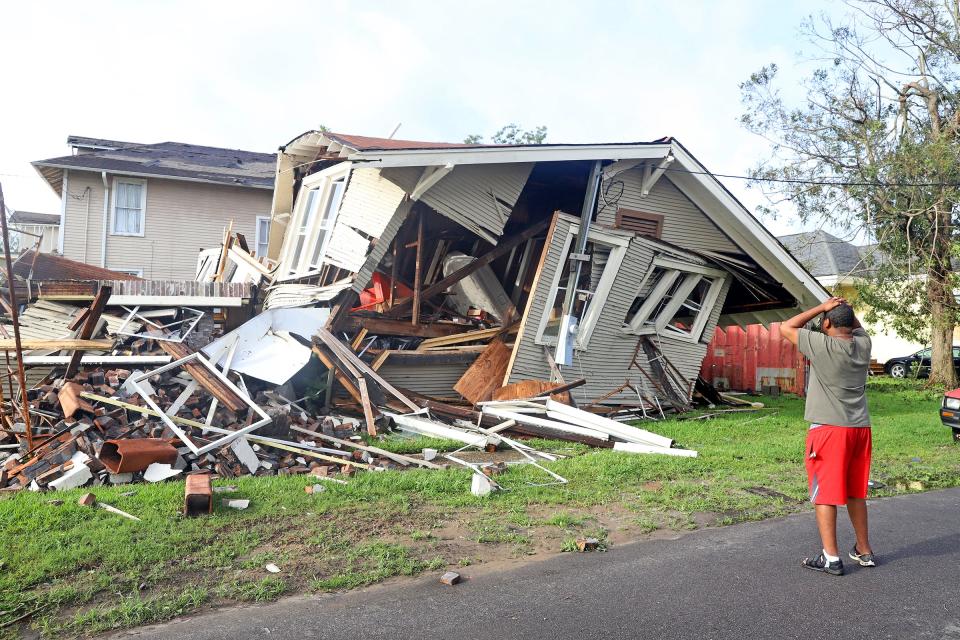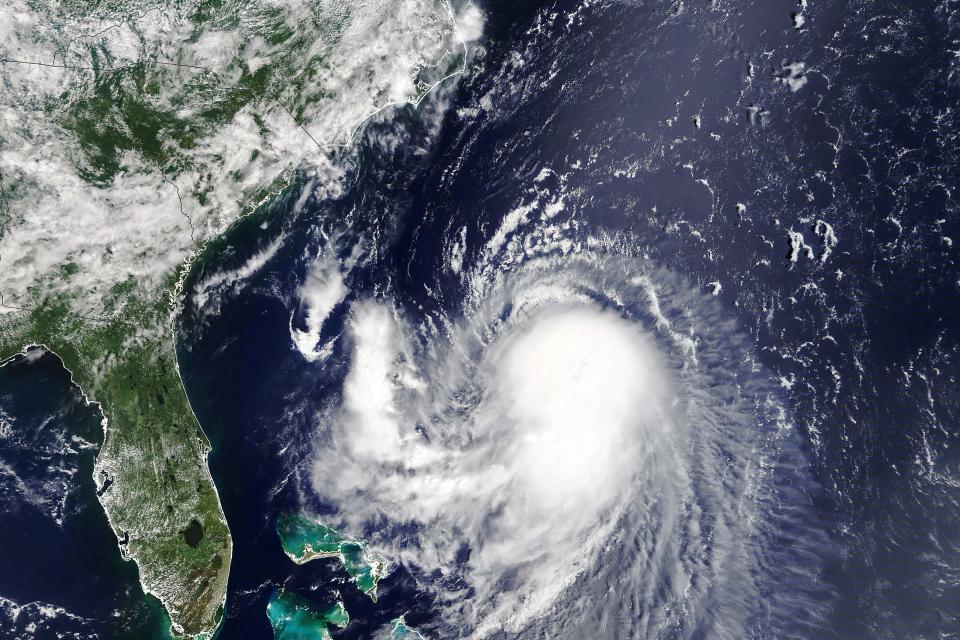'Hurricanes don't care about your timeline': Experts urge preparation for storm season
- Oops!Something went wrong.Please try again later.
Facing forecasts of yet another busy Atlantic hurricane season, National Hurricane Center Director Ken Graham fears the alarming trend of fiercer, more-dangerous storms will continue — catching families who postpone preparations flat-footed.
His warning: Hurricanes don't care about your timeline.
"Here's a stat for you. Has it been busy? We have had more Cat 4 and Cat 5 landfalls in the United States from 2017 to 2021 than we did from 1963 to 2016," Graham said Wednesday during the National Hurricane Conference in Orlando.
"(From) 2017 to 2021? $320 billion in losses," Graham said.
The Atlantic hurricane season kicks off June 1 and lasts through Nov. 30. Last year's season ranked as the third most-active on record with 21 named storms (winds of 39 mph or higher) and seven hurricanes (winds of 74 mph or higher), including four major hurricanes (Category 3 or greater with winds of 111 mph or higher).
La Nina: La Niña looks set to linger, threatening Florida with spring wildfires and summer hurricanes
Accuweather, CSU forecasters agree: Active hurricane season ahead. Here's what you need to know
Last week, Colorado State University’s Tropical Meteorology Project released similar, busier-than-average predictions for the upcoming Atlantic season. Forecasters expect 19 named storms and nine hurricanes, including four major hurricanes.
CSU's probabilities of a major hurricane striking the:
Continental United States: 71% (average for the last century is 52%).
U.S. East Coast: 47% (average for the last century is 31%).
Gulf Coast from the Florida Panhandle westward to Brownsville, Texas: 46% (average for the last century is 30%).
Why? CSU forecasters cited the likely lack this summer and fall of El Niño, which can generate vertical wind shear that tears apart hurricanes. Subtropical Atlantic waters also may become warmer than normal, compounding matters.
Hosted by Rosen Centre Hotel, the weeklong National Hurricane Conference has attracted about 1,600 city and county officials, meteorologists, first responders and other attendees from across the country. An array of workshops offers professional training in disaster preparedness, response and recovery.
Additionally, about 600 exhibitors representing roughly 200 vendors are staffing a hurricane-themed exhibit hall: think satellite communications, debris removal, potable drinking water, floodwater barriers.
The hurricane expo includes colorful products like portable commodes that fold up like a suitcase (Brief Relief of Oceanside, California), 72-hour emergency meal kits featuring chicken pasta parmesan (Chef Minute Meals of Piney Flats, Tennessee), and towable trailers equipped with solar panels that provide electricity and Wi-Fi in damage zones (OffGrid Power Solutions of Dexter, Missouri).
All told, this National Hurricane Conference is the most heavily attended since 2006 — the year after Hurricane Katrina devastated New Orleans, said Rebeca Mueller, media room director.
Federal Emergency Management Agency Administrator Deanne Criswell said hurricanes over the Gulf of Mexico have intensified rapidly the last several years, giving emergency managers less time to warn coastal residents to move their families to safety.
"They are stronger. They're lasting longer, at higher durations, over land. Hurricane Ida last year was a Category 4 hurricane for about four hours over land — which is unheard of," Criswell said during a Wednesday morning news conference.
"And then, these hurricanes don't just impact coastal communities, right? We saw, again, Hurricane Ida left damage from the Gulf Coast all the way to the Eastern seaboard. And so, all of those communities along the way experienced the impacts from that," Criswell said.
"And this is just going to continue," she said.
During an afternoon speech, Criswell said FEMA recently determined communities who adopt modern building codes will avoid paying $132 billion in storm damages by the year 2040. However, 65% of counties, cities and towns still have not adopted modern building codes.
Wednesday, U.S. Sen. Rick Scott of Florida sent Criswell a letter asking what FEMA is doing to ensure it has an adequate stockpile of emergency supplies for low-income or displaced families — along with supplies such as fuel, water and food — in light of rising inflation and supply-chain snarls.
"With the start of hurricane season rapidly approaching, Americans preparing for potential storms are facing skyrocketing prices and empty shelves, making it even more difficult to take the steps needed to keep their loved ones safe during and after a natural disaster," Scott's letter said.
Interviewed briefly after her hurricane speech, Criswell said she had not yet seen Scott's letter.

"There is an issue, I would say, with the increase in the cost of supplies as we're going through (post-hurricane) rebuilding. We're seeing that in areas that have been rebuilding from disasters from last year," Criswell said.
"It is an issue, and it is slowing down some of their rebuilding efforts. But we will continue to reimburse jurisdictions when it's a presidentially declared disaster for the costs that they're incurring to repair their public facilities. And we have individual (and household) assistance programs that help them make their homes safe and sanitary," she said.
Graham said the Atlantic generated 51 named storms in 2020 and 2021. He said 16 hurricanes have made landfall in the United States since 2017, including seven major hurricanes.

Casey Tingle is Louisiana's Homeland Security and Emergency Preparedness director. He told the conference crowd that about 1,500 displaced families in his state remain in temporary housing from the 2020 hurricane season.
"So now, some 19 months after that event, they remain in RVs and travel trailers and mobile homes, waiting and trying to navigate a recovery process to get back home," Tingle said.
"In addition to that, we've had over 7,000 families in temporary housing related to Hurricane Ida. And more on the waiting list, and more being housed every day," he said.
Rick Neale is the South Brevard Watchdog Reporter at FLORIDA TODAY (for more of his stories, click here.) Contact Neale at 321-242-3638 or rneale@floridatoday.com. Twitter: @RickNeale1
Support local journalism. Subscribe today.
This article originally appeared on Florida Today: Hurricane Center forecasts another busy Atlantic hurricane season

